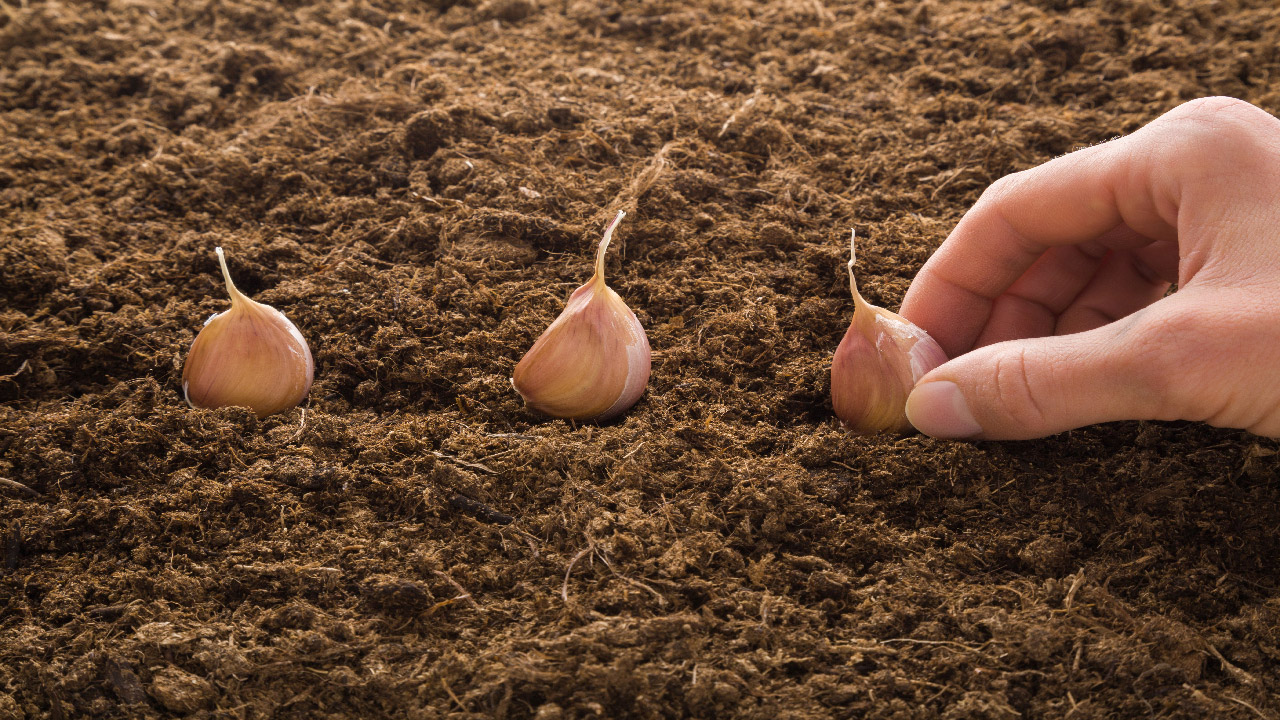Planting Garlic for Winter – All the Details of Planting Cloves
Oct 24th 2024
Garlic is considered an undemanding crop that any gardener can handle. However, when planting garlic, following the basic agricultural rules is essential. You must carefully prepare the garden bed, select quality planting material, and perform all the work on time.
This blog will review the most common methods of planting garlic in the Fall.
When Should You Plant Garlic Cloves?
It is essential to choose the right time for planting to get a good harvest of garlic. If spring garlic is planted in the spring, then winter garlic can be planted in mid-autumn, approximately a month before the onset of permanent frost.
If you plant winter garlic too early, it will sprout and freeze, negatively affecting the yield. However, if you plant garlic just before severe frost, it will not have time to root and may freeze in the winter. In the middle region, garlic is usually planted in the first or second week of October. By November, the bulbs will have grown long, strong roots.
How to Prepare the Bed for Garlic
Garlic grows excellently in light, loose soil rich in organic matter. Garlic can only be returned to its previous location after four years, and it is also not recommended to plant garlic after onions for the same period. For planting garlic, choose well-lit, flat areas where water does not stagnate after rain.
Add compost or well-rotted manure. Fresh manure and chicken droppings should not be used when preparing the bed for winter garlic, as this can cause burns to the root system and even kill the planting material. Moreover, excess nitrogen stimulates the growth of the above-ground part at the expense of the bulbs.
In addition to organic fertilizers, phosphorus-potassium fertilizers are applied to the bed for winter garlic. Potassium and phosphorus ensure good root system development and help the bulbs survive the winter.
Note:Ash should be applied separately from any phosphorus fertilizers, as using it together with superphosphate or phosphate rock renders a significant amount of phosphorus unavailable to the plants.
Distribute the fertilizers evenly over the soil surface, and then dig them into a depth of half a shovel or loosen the soil with a fork. Prepare the bed in advance, 7-10 days before the expected planting date, so the soil settles.
.
How to Prepare the Planting Material
The quality of the planting material plays a vital role in successfully cultivating garlic. When propagating garlic with cloves without signs of disease, select large, undamaged bulbs. Then, divide them into cloves, taking care not to damage the protective layer and the base where the roots develop. This should be done immediately before planting, so the cloves do not dry out. Use the largest cloves for planting. They will produce the best garlic bulbs.
How to Properly Plant Garlic
There are various methods for planting garlic cloves. They are usually planted in single or double rows, which can be alternated, making it easier to care for the plants and improving air circulation.
The planting depth depends on the size of the cloves. For large cloves, make furrows about 3-4 inches deep, so there is approximately 2 inches from the top of the clove to the soil surface. Smaller cloves can be planted at a depth of 2-3 inches. Use a transplanter tool to make the right size furrows and don’t forget to use gloves.
Adding Mulch to Your Garlic Bed
After planting the garlic, mulch the bed with hay, rotted sawdust, pine needles, or a mixture of deacidified peat moss and compost. Mulch helps retain moisture, protects the soil from freezing and erosion, and maintains a stable temperature in the root zone, which is very important for successful garlic rooting.
In spring, the mulch can be left in place to make caring for the plantings easier: mulched beds require less weeding and watering. Moreover, organic mulch will gradually decompose, enriching the soil with nutrients and creating excellent conditions for the development of beneficial soil microflora.
Wrapping It Up
Planting garlic in raised garden beds is a rewarding experience and an excellent way to enhance your garden's productivity. With the proper preparation, soil quality, and care, you can enjoy a bountiful harvest of garlic. Remember to choose the suitable variety for your climate, plant appropriately, and provide the necessary nutrients throughout the growing season.
Whether you're a seasoned gardener or just starting out, garlic is a fantastic crop that thrives in raised beds, giving you an abundant supply.

